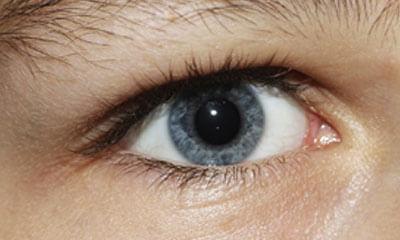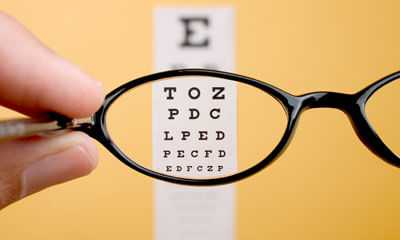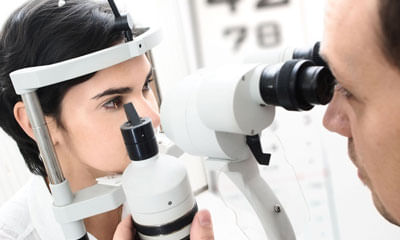Get the App
For Doctors
Login/Sign-up
Health Feed
Find Doctors
Health Packages
AllQ&AsTips
Nearsightedness Questions
Asked for female, 27 years old from Tiruppur
Share
Bookmark
Report
Bell’s palsy can affect the muscles around the eye and the eyelid, sometimes preventing the eye from blinking properly. Because the eye is unable to blink normally, not enough tears are spread across the eye to keep it moist. The cornea becomes dehydrated and dry spots begin to form. The eye may become extremely dry and inflamed, often leading to exposure keratitis, a condition caused by the cornea constantly being exposed to the atmosphere
675 people found this helpful
Asked for female, 19 years old from Deoghar
Share
Bookmark
Report
I am sorry to hear about your concern but will be happy to assist you.
With myopia of 1 dpt (diopter) you can see clearly up to a distance of about 1 m, everything beyond out of focus; with 2 dpt from about 50 cm; with 3 diopters from about 33.3 cm. With 5 diopters you can no longer see clearly at about 20 cm and beyond.
Let's connect over a call so that we can discuss your concern in details and make a suitable treatment plan for you.
With myopia of 1 dpt (diopter) you can see clearly up to a distance of about 1 m, everything beyond out of focus; with 2 dpt from about 50 cm; with 3 diopters from about 33.3 cm. With 5 diopters you can no longer see clearly at about 20 cm and beyond.
Let's connect over a call so that we can discuss your concern in details and make a suitable treatment plan for you.
Asked for female, 21 years old from Sangli
Share
Bookmark
Report
Asked for female, 14 years old from Guwahati
Share
Bookmark
Report
Asked for female, 14 years old from Guwahati
Share
Bookmark
Report
Asked for male, 55 years old from Patna
Share
Bookmark
Report
I am sorry to hear about your concern but will be happy to assist you.
Common causes of sudden vision loss include eye trauma, blockage of blood flow to or from the retina (retinal artery occlusion or retinal vein occlusion), and pulling of the retina away from its usual position at the back of the eye (retinal detachment).
Let's connect over a call so that we can discuss your concern in details and make a suitable treatment plan for you.
Common causes of sudden vision loss include eye trauma, blockage of blood flow to or from the retina (retinal artery occlusion or retinal vein occlusion), and pulling of the retina away from its usual position at the back of the eye (retinal detachment).
Let's connect over a call so that we can discuss your concern in details and make a suitable treatment plan for you.
1 people found this helpful
Asked for female, 0 years old from Trivandrum
Share
Bookmark
Report
I am sorry to hear about your concern but will be happy to assist you.
High myopia is sometimes an inherited genetic condition, and is marked by the eyeball stretching and growing too long. This throws off the eyeball's normal proportions, so that incoming light focuses in front of the retina, instead of on it.
Let's connect over a call so that we can discuss your concern in details and make a suitable treatment plan for you.
High myopia is sometimes an inherited genetic condition, and is marked by the eyeball stretching and growing too long. This throws off the eyeball's normal proportions, so that incoming light focuses in front of the retina, instead of on it.
Let's connect over a call so that we can discuss your concern in details and make a suitable treatment plan for you.
45 people found this helpful
Asked for female, 19 years old from Deoghar
Share
Bookmark
Report
I am sorry to hear about your concern but will be happy to assist you.
Starbursts, or a series of concentric rays or fine filaments radiating from bright lights, may be caused by refractive defects in the eye. Starbursts around light are especially visible at night, and may be caused by eye conditions such as cataract or corneal swelling, or may be a complication of eye surgery.
Let's connect over a call so that we can discuss your concern in details and make a suitable treatment plan fo...more
Starbursts, or a series of concentric rays or fine filaments radiating from bright lights, may be caused by refractive defects in the eye. Starbursts around light are especially visible at night, and may be caused by eye conditions such as cataract or corneal swelling, or may be a complication of eye surgery.
Let's connect over a call so that we can discuss your concern in details and make a suitable treatment plan fo...more
7 people found this helpful
Asked for female, 4 years old from Kolkata
Share
Bookmark
Report
Asked for female, 19 years old from Deoghar
Share
Bookmark
Report
Astigmatism is diagnosed by an eye exam. A complete eye exam involves a series of tests to check your eye health and a refraction, which determines how your eyes bend light. Your eye doctor may use various instruments, aim bright lights directly at your eyes and ask you to look through several lenses.
Let's connect over a call so that we can discuss your concern in details and make a suitable treatment plan for you.
Let's connect over a call so that we can discuss your concern in details and make a suitable treatment plan for you.
5 people found this helpful
Book appointment with top doctors for Nearsightedness treatment
View fees, clinic timings and reviews
Ask a free question
Get FREE multiple opinions from Doctors
posted anonymously














